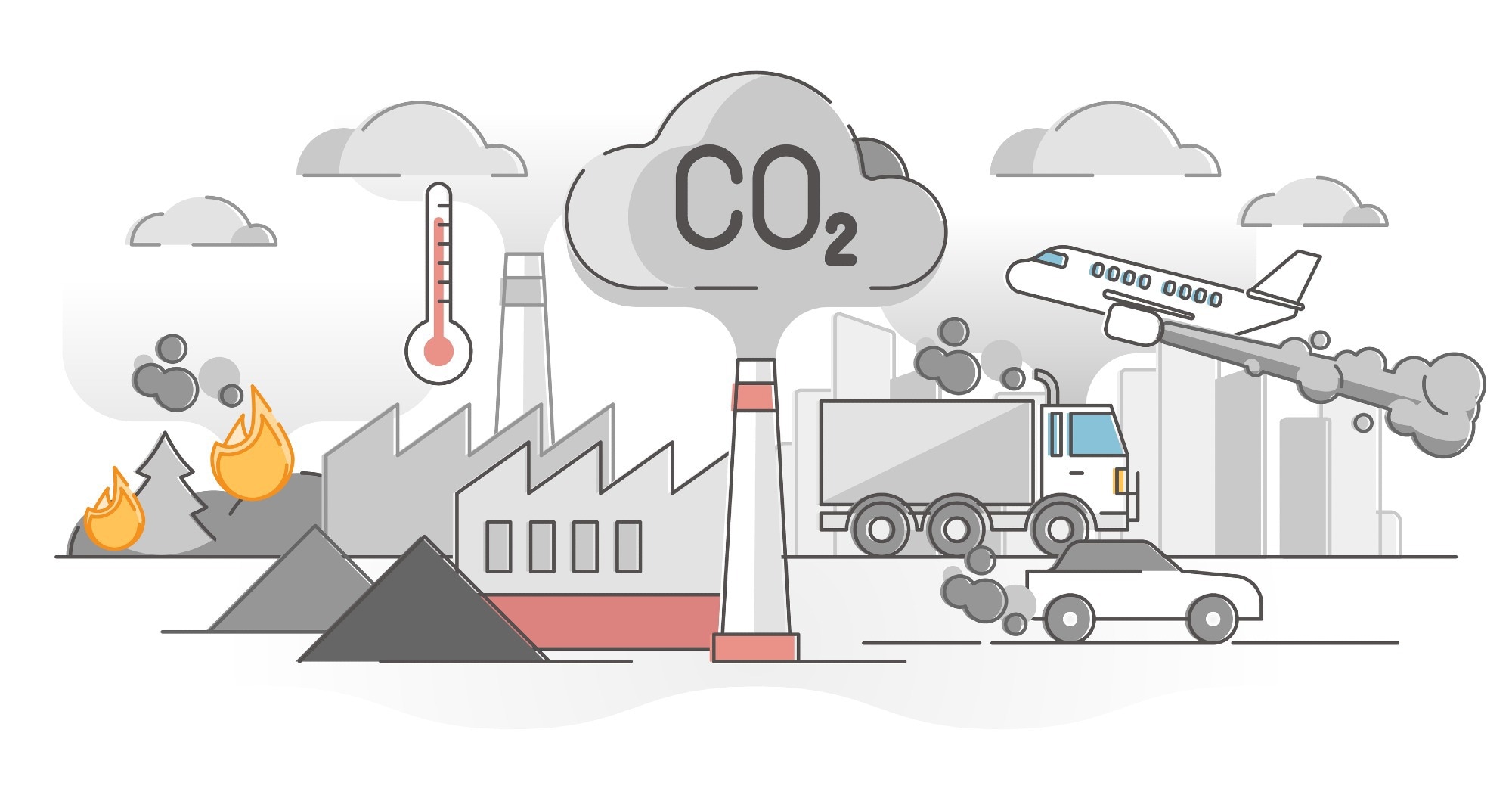Hydrate-based gas separation is used for sequestration of carbon dioxide (CO2). However, the requirement for high-performing additives to combat its low gas storage capacity makes this method expensive and environmentally unfriendly.

Study: Magnetically Recyclable −SO3–-Coated Nanoparticles Promote Gas Storage via Forming Hydrates. Image Credit: VectorMine/Shutterstock.com
An article recently published in ACS Applied Materials and Interfaces discussed the synthesis of a novel hydrate promoter, copolystyrene-sodium styrene sulfonate (PNS)-coated iron oxide (Fe3O4) nanoparticles having an integrated core-shell structure and synthesized via emulsion polymerization.
During methane hydrate formation, PNS@Fe3O4 nanoparticles served as an efficient promoter and reduced the induction time by one-third compared to the commonly used promoter sodium dodecyl sulfate (SDS). Additionally, gas storage capacity has increased up to 155 volume-by-volume (v/v).
Furthermore, the SDS and other surfactant-based promoters induced foam formation during hydrate decomposition. This foam formation issue was resolved by replacing the promoters mentioned above with PNS@Fe3O4 nanoparticles. Additionally, these PNS@Fe3O4 nanoparticles as promoters enhanced the CO2 storage capacity by more than 30% due to the formation of a marine environment mimicking fine sediments.
Moreover, the integration of magnetically recoverable nanoparticles improved the gas storage efficiency due to the formation of gas hydrates. This excellent recycling performance provided a new path to solve environmental and economic problems commonly encountered in additive usage.
Gas Storage Using Gas Hydrates
Due to the demand for greenhouse gas treatment and clean energy requirements, there has been an increasing need for gas storage and transportation at the industrial level. Moreover, laying pipelines for long-distance gas transportation is a costly and risky process with the natural geological hazards affecting the gas pipelines leading to corrosion and blockage.
To this end, a facile and economical gas storage method is necessary for convenient gas transportation to achieve environmentally friendly and low-carbon energy use. One way to realize this is to compress the storage volume to the maximum for facile gas transportation. However, compression of natural gases involves the need for special facilities and extreme storage environments, limiting their practical application for commercialization.
Due to their adsorption capacity, molecular organic frameworks (MOFs), active carbon, and other porous materials were previously explored for gas storage. Structurally, the gas hydrates are ice-like solid components with cage-structured host water molecules and guest molecules. The formation of these gas hydrates takes place at low temperature and moderately high pressure. Moreover, these gas hydrates have a high gas storage capacity (216 v/v for methane).
Introducing surfactants can improve the gas storage capacity and formation kinetics of gas hydrates along with an increased number of nucleation sites. Although MOFs can promote methane hydrate formation using promoters like sodium polystyrene sulfonate and SDS results in foam formation during hydrate decomposition.
PNS@Fe3O4 Nanoparticles Towards Gas Storage
In the present work, core−shell nanoparticles that are recoverable magnetically were prepared and utilized as hydrate promoters to reduce the hydrate induction time. The process was devoid of additive losses. These core−shell nanoparticles were characterized for their surface properties, and the reduction of the foam formation during hydrate decomposition was discussed, essential for facile gas storage.
Furthermore, the effect of surfactant concentration on the induction time (during hydrate formation) and its gas storage capacity was investigated. Finally, the correlation between the magnetic property of the prepared nanoparticles and marine sediments during the CO2 gas storage and its underlying mechanism was discussed.
The experimental results revealed that compared to SDS samples with a concentration of 500 milligrams per liter, the induction time of gas hydrate formation in the PNS-0.4 sample reduced from 243.7 ± 27.8 minutes to 151 ± 14.4 minutes. Here, 0.4 represents the mass ratio of sodium p-styrene sulfonate. Hence, PNS-0.4 showed good gas storage capacity.
Moreover, the induction time of PNS-0.3 (802.1±27.8 minutes) was higher than PNS-0.4 and PNS-0.5 samples, suggesting the role of concentration on the dispersion of nanoparticles. Moreover, this induction time of PNS-0.3 was much higher than the SDS and PNS pure samples. Thus, PNS nanoparticles expedited the hydrate nucleation process and reduced the induction time.
Conclusion
To summarize, gas hydrate promoters based on novel integrated core−shell-structured nanoparticles were synthesized via emulsion polymerization. These nanoparticles promoted hydrate growth efficiently and exhibited good recycling properties. The polymer encapsulation on magnetic cores facilitated the surface functionalization of prepared nanoparticles.
The isothermal hydrate formation test revealed that PNS-0.4 showed a 30% reduced induction time compared to the traditional SDS solution. Moreover, the methane gas storage capacity was increased by 20%. Furthermore, PNS mimicked the marine sediment in terms of CO2 gas storage.
Introducing the PNS nanoparticles into the solution resulted in rapid nucleation and mild growth of gas hydrate, overcoming the limitation of mass transfer. Moreover, the surface functional groups on the nanoparticles helped prevent foam formation during hydrate decomposition. Additionally, the novel nanoparticles showed good reuse performance with recyclability up to five times.
Reference
Zhao, Y., Yang, M., Li, M., Dong, H., Ge, Y., Li, Q., Zhang, L et al. (2022) Magnetically Recyclable −SO3–-Coated Nanoparticles Promote Gas Storage via Forming Hydrates. ACS Applied Materials & Interfaces https://pubs.acs.org/doi/10.1021/acsami.2c06230
Disclaimer: The views expressed here are those of the author expressed in their private capacity and do not necessarily represent the views of AZoM.com Limited T/A AZoNetwork the owner and operator of this website. This disclaimer forms part of the Terms and conditions of use of this website.